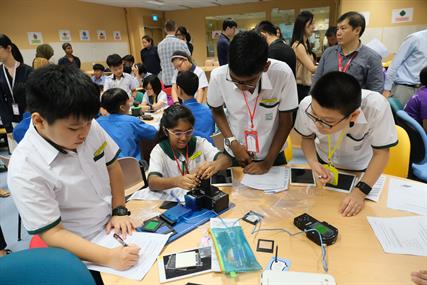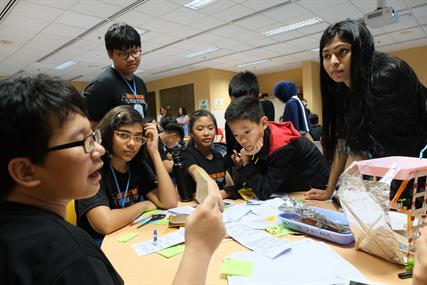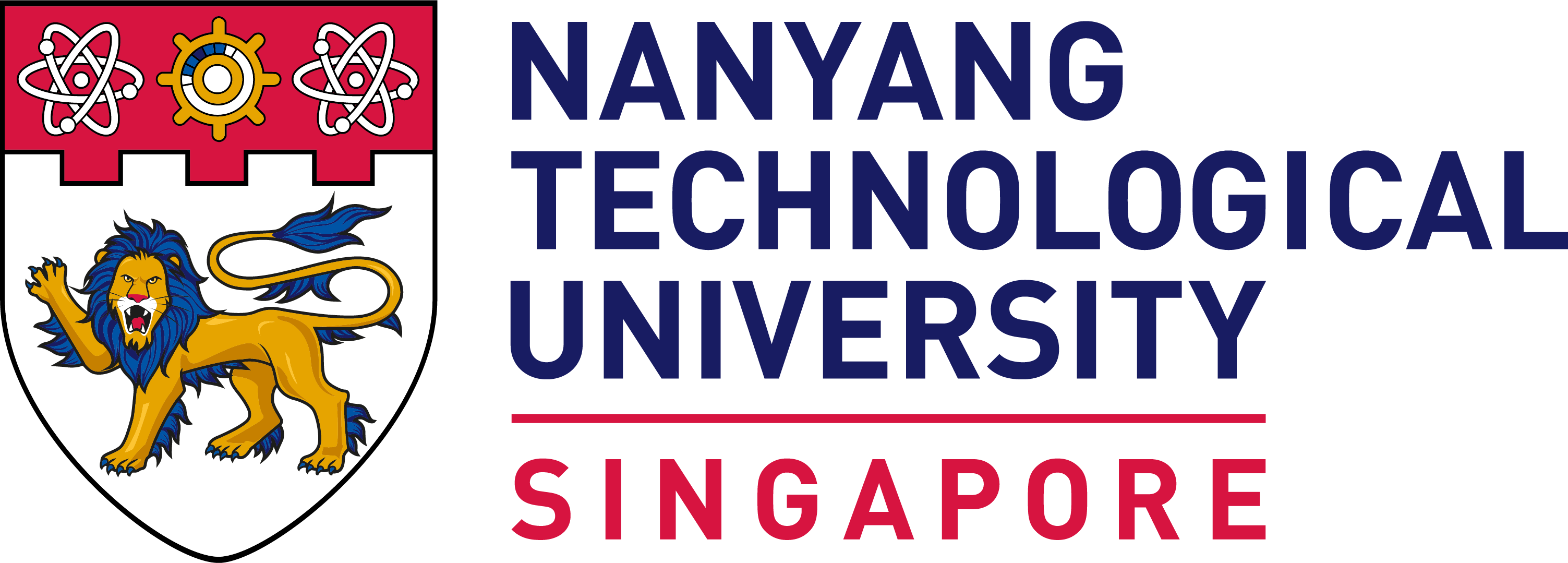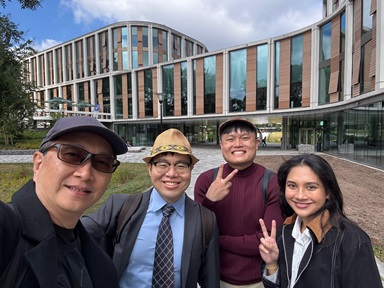Knowledge Building Design Studio 2019
This year, the Knowledge Building (KB) community decided to move away from the usual sharing of practices to an active design effort, by bringing students into the KB community to work alongside scientists, education researchers and teachers. This idea was conceptualised in January 2019 and was named the Knowledge Building Design Studio, which took place at NIE on 19 and 20 November 2019.
The idea of the KB Design Studio was to bring students from different schools together to collectively work on the real-world issue of sustainability. Through their interaction with experts and researchers at the Design Studio, these students would then take on the role of explaining KB to their peers and other teachers when they returned to their classrooms. The research component was integrated into the Design Studio as a way to consolidate the design and to translate it into practical strategies, lessons and tools to be adopted back in schools to improve the KB practice.
The Design Studio adopted a highly collaborative approach to break the boundaries of research and students and teachers as research objects by creating participatory and active research sites in which teachers, students, researchers and experts work as a community to advance the notion of new environment and assessment for KB. KB theories, pedagogies and technology adopted in this research were derived from decades of Singapore-based innovation pedagogy research undertaken by the Learning Sciences group in NIE.
The aim of this year’s KB Design Studio, themed ‘Sustainable Cities and Communities’, was to engage students in KB discourse with scientists and environmentalists and provide them a space to work creatively with ideas. With little support from the adults, the students were clearly capable of improving ideas, creating prototypes, analysing their data and working collaboratively with students from other schools. They were extremely focused throughout the two days.
The Community
This Design Studio brought together 13 teachers and specialists from the Ministry of Education playing the role of teacher-researchers, and 36 students aged 10 to 15 from seven different schools as our research partners.
Also involved in the Design Studio were NIE experts on vertical farming and sustainable living (Assoc Prof Tan Aik Ling, Assoc Prof He Jie and Dr Norman Lim), researchers from Learning Sciences and Innovation team and LifeLong Learning and Well-being team, industry partners from Panasonic and Addest Technology, as well as NTU colleagues, Assoc Prof Justin Dauwel and his researcher from the Dauwels Lab at NTU’s School of Electrical and Electronic Engineering.
Outline of Activities
The Design Studio first kicked off with a talk by Dr Tan Kah Chye, Physicist in training and co-founder of Addest Technology, about the ‘Life of a Scientist’ to intrigue as well as motivate students to take an inquiry-driven perspective towards learning. This was followed by the presentation of the problem, which was to build a prototype that can be implemented in cities so as to promote sustainable living, posed for the students to work on for the rest of the Design Studio. Through the course of the day, the students engaged with experts in vertical farming and sustainable living in order to grow their knowledge and to improve their ideas continuously.

Dr Tan talking about the ‘Life of a Scientist’

Students engaged in an experiment

Students using the Knowledge Forum to share their ideas with their peers

A/P Tan Aik Ling giving a talk on Vertical Farming
Student's work during the Vertical Farming task

Students working on designing a prototype based on the problem posed

Student presentations on the vertical farming task
On the second day of the Design Studio, students started to build their prototype using the knowledge they had learned from the session with the experts the day before. Students had the opportunity to discuss the issues that they had in solving the overarching question and were involved in collecting and analysing data to improve their prototype. Finally, they had to present their prototype to a panel of scientists and representatives from the farming community.

Students building their prototype

Students’ presentation of their prototype
Overall, the responses from the students were very encouraging and overwhelmingly positive. Teachers were worried that their students could not manage the tasks but the students proved them wrong. The students reflected that they enjoyed working with friends from other schools and they loved the challenges of the tasks. They advanced their understanding on the Knowledge Forum, reflected on their emotions and above all, just had fun.
Assoc Prof He and Dr Lim were invited to discuss with the students about their final products in the last segment of the design studio. The discourse was electrifying and brought about thought-provoking questions such as “Do the plants need to work 24 hours throughout?” The students rose to the occasion by sharing thoughts and ideas with the experts.
Students felt accomplished with their prototype but they were also challenged with the notion that more could be done to improve their work and knowledge. The teachers who joined in the conversation admitted that the questions and challenges left them thinking hard too.
This concluding segment was one of the most powerful rise-above episodes for many at the Design Studio, leaving us clearer about what it means to be on a continual improvement trajectory.

Group photo of all the Design Studio participants





_jingyu-wang.tmb-listing.jpeg?Culture=en&sfvrsn=4127a7de_1)
.tmb-listing.jpg?Culture=en&sfvrsn=497f19c9_1)
.tmb-listing.jpg?Culture=en&sfvrsn=15e6d6d7_1)